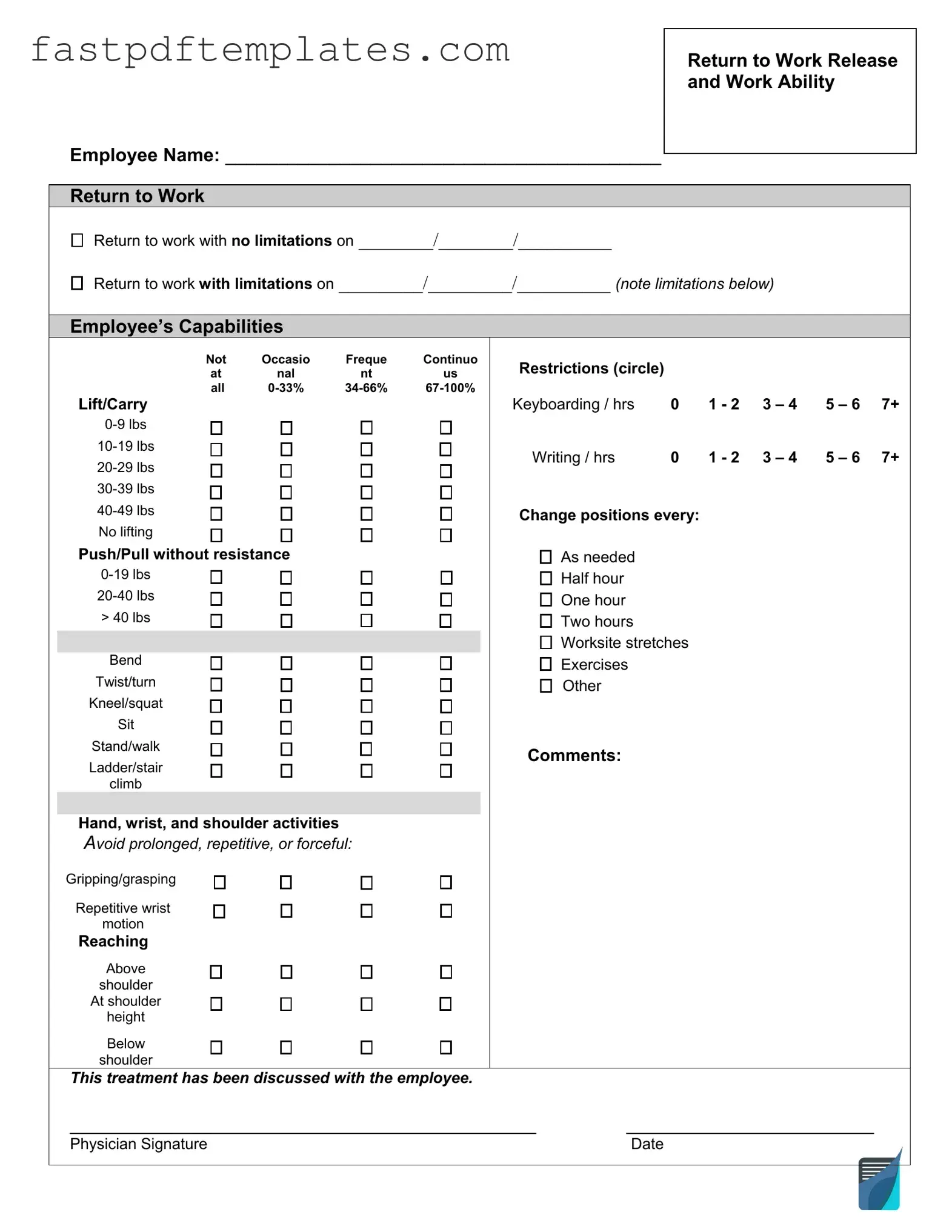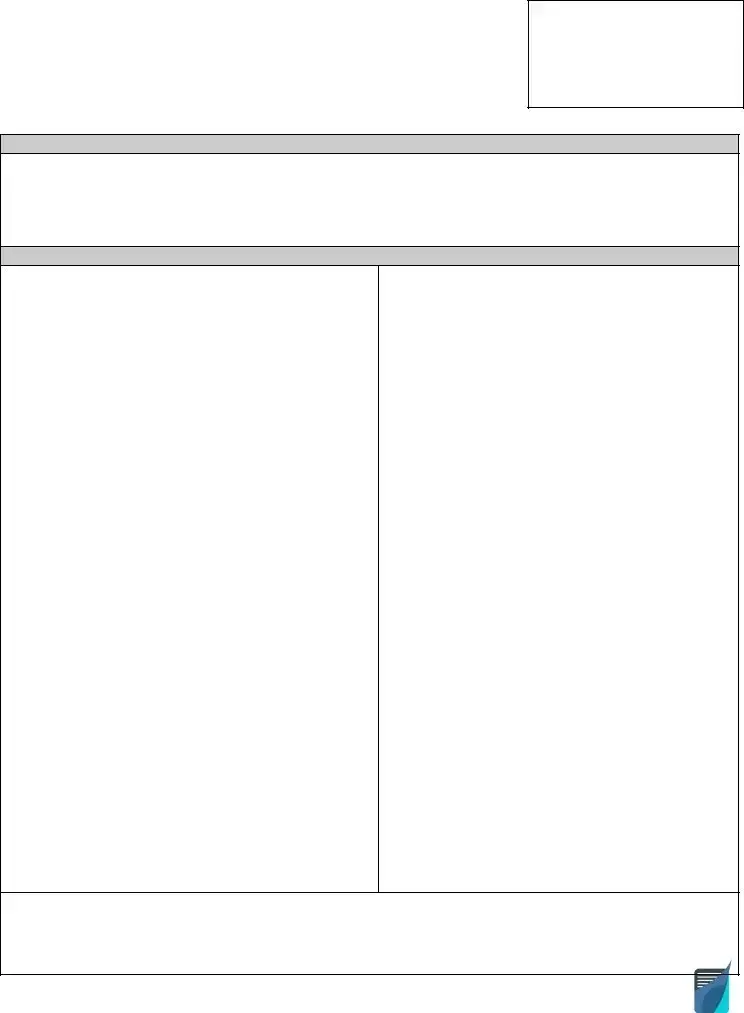The Work Release form is similar to a Parole Agreement. Both documents serve as a means for individuals to reintegrate into society while still under some level of supervision. A Parole Agreement outlines the conditions and expectations for a person who has been released from prison before completing their sentence. Like the Work Release form, it typically includes stipulations regarding employment, curfews, and required check-ins with a parole officer. This ensures that individuals are supported in their transition while also being held accountable for their actions.
Another document akin to the Work Release form is the Probation Agreement. This document is used when an individual is sentenced to probation instead of jail time. Similar to the Work Release form, it sets forth specific conditions that the individual must follow, such as attending counseling, maintaining employment, and avoiding contact with certain individuals. Both documents aim to promote rehabilitation and community safety while allowing individuals to maintain a semblance of normalcy in their lives.
The Release of Liability form bears resemblance to the Work Release form as both documents involve an element of risk management. A Release of Liability form is often used in activities where participants might be exposed to potential harm. It requires individuals to acknowledge the risks involved and agree not to hold the organization liable for any injuries. Similarly, the Work Release form acknowledges the risks associated with reintegrating into the community while still under legal supervision, outlining the responsibilities of both the individual and the supervising authority.
The Employment Verification form is another document that shares similarities with the Work Release form. While the Work Release form is focused on the conditions of release, the Employment Verification form is used to confirm an individual's employment status. Both documents are crucial in the context of employment, as they help establish a person's ability to work and support themselves. In the case of a Work Release, securing a job is often a condition of the release, making these forms interconnected in the journey toward independence.
The Conditional Release form is closely related to the Work Release form. Conditional Release is often granted to individuals who have served a portion of their sentence but are still under certain restrictions. Both forms outline specific conditions that must be met, such as attending regular meetings with a supervising officer or completing community service. This framework helps facilitate a smoother transition back into society while ensuring that individuals remain accountable for their actions.
The Release Agreement is another document that parallels the Work Release form. This agreement is often used in civil matters, where one party agrees to release another from certain obligations or liabilities. While the context differs, both forms require individuals to acknowledge their responsibilities and the terms under which they are being released. This promotes clarity and understanding between the parties involved, just as the Work Release form does between the individual and the legal system.
The Informed Consent form is similar in that both documents require individuals to acknowledge and accept certain conditions. Informed Consent is typically used in medical or research contexts, where individuals must understand the risks and benefits of participating in a procedure or study. The Work Release form similarly requires individuals to understand the implications of their release and the responsibilities they must uphold, ensuring they are fully aware of their situation.
The Release from Custody form also shares characteristics with the Work Release form. This document is used when an individual is being released from a detention facility, often outlining the conditions of their release. Like the Work Release form, it may specify requirements such as reporting to a probation officer or maintaining employment. Both forms serve to ensure that individuals understand their obligations upon release, promoting accountability and successful reintegration into society.
The Non-Disclosure Agreement (NDA) can be likened to the Work Release form in terms of protecting sensitive information. While NDAs are commonly used in business contexts to prevent the sharing of confidential information, both documents require individuals to adhere to specific conditions. The Work Release form may include stipulations about maintaining confidentiality regarding certain aspects of their legal situation, emphasizing the importance of trust and responsibility in both scenarios.
Lastly, the Release of Information form is similar to the Work Release form in that both documents facilitate communication and transparency. The Release of Information form allows individuals to authorize the sharing of their personal information with specified parties. This can be crucial for those on a Work Release, as it may be necessary to share information with employers, social services, or legal representatives. Both forms emphasize the importance of consent and accountability in the management of personal information and legal obligations.

